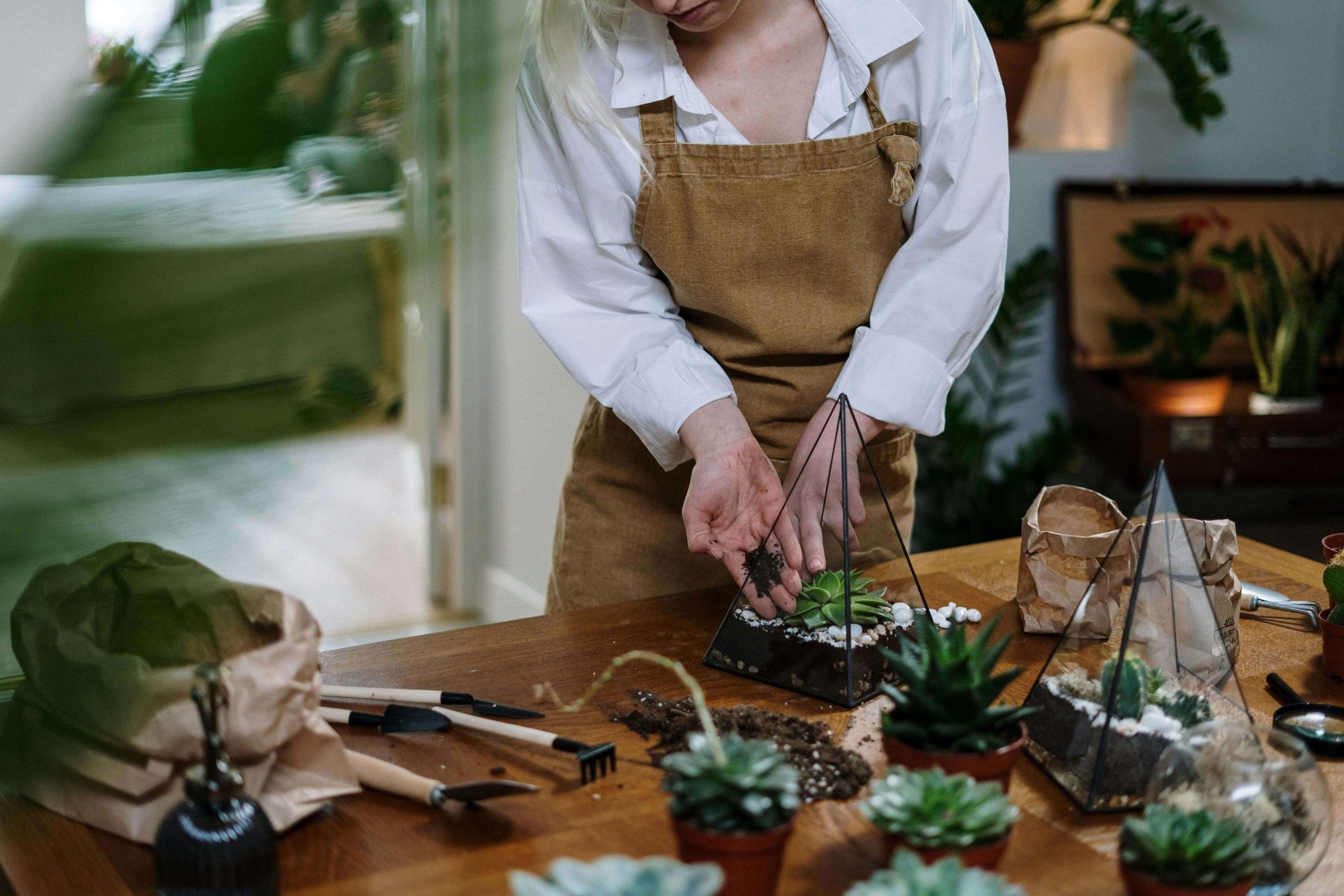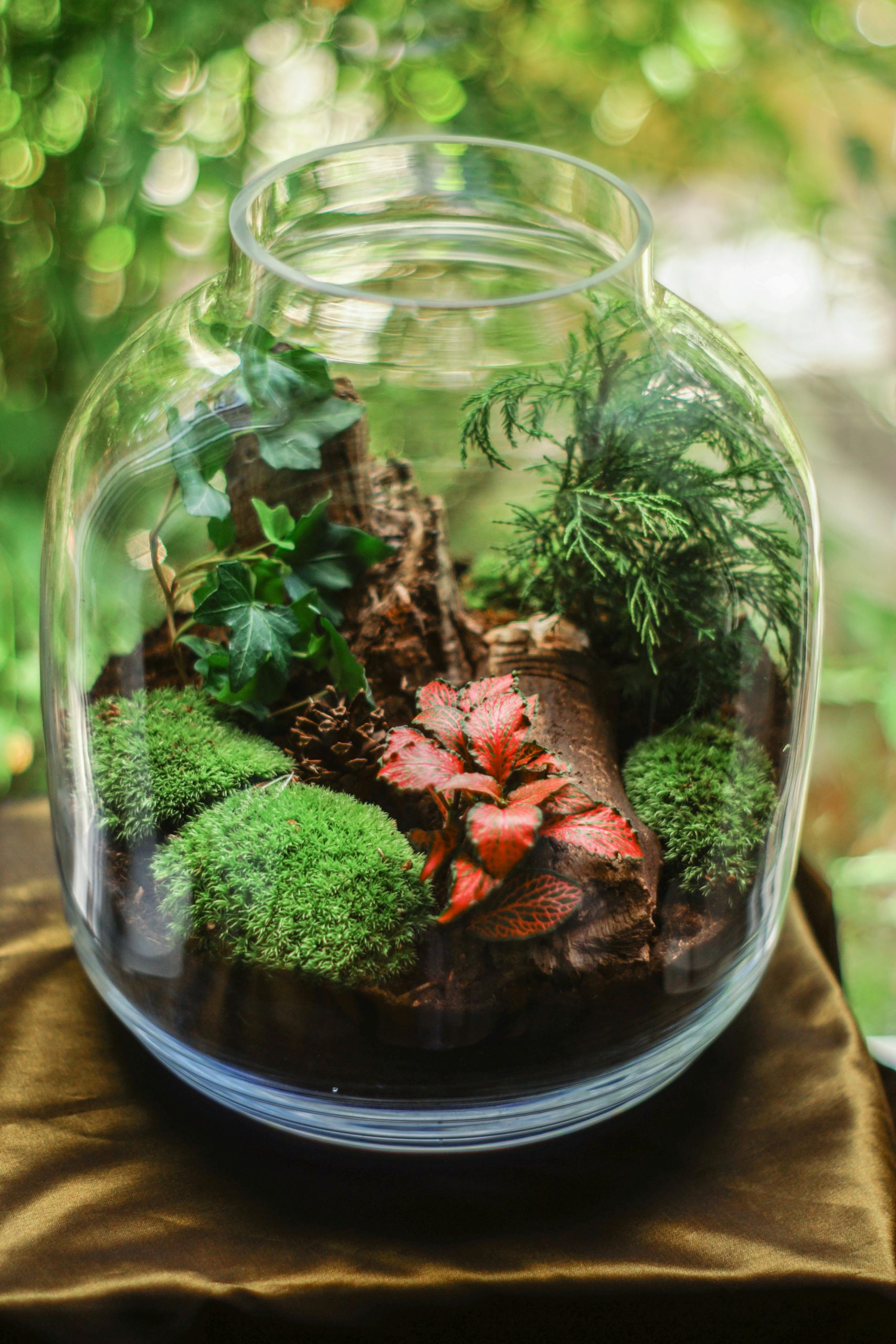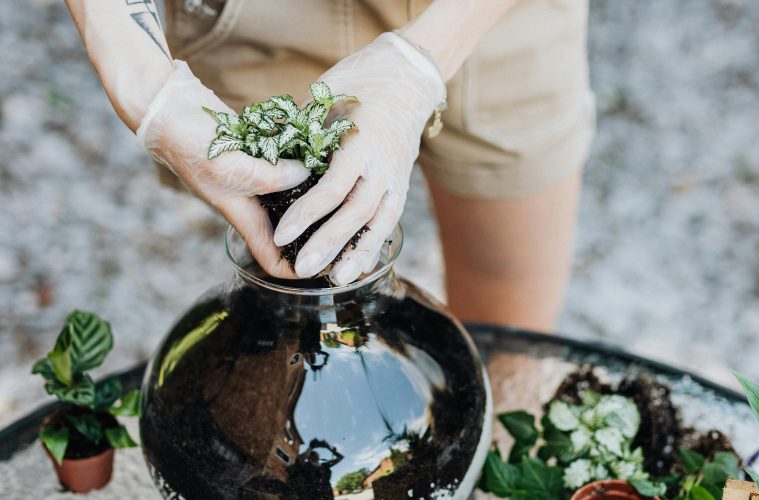Terrariums are miniature ecosystems that bring a touch of nature indoors, making them perfect for anyone looking to add greenery to their home with minimal effort.
These enchanting glass gardens not only beautify your space but also require little maintenance once set up correctly. Here’s how you can keep your terrarium thriving and pristine with simple care routines.
Choosing the right terrarium
Before diving into care tips, selecting the right terrarium sets the stage for success. Decide between open or closed terrariums based on the type of plants you prefer and your desired maintenance level.
Closed terrariums, with their sealed environment, are ideal for moisture-loving plants like ferns and mosses. Open terrariums, on the other hand, allow for better airflow and are suitable for succulents and cacti.
Basic maintenance routine
Regular upkeep ensures your terrarium remains a vibrant slice of nature. Here’s a straightforward routine to follow:
Watering: Monitor the moisture level within your terrarium. Closed terrariums require less frequent watering due to the recycling of moisture, while open ones may need watering every 1-2 weeks, depending on the plants’ needs. Use a spray bottle or watering can with a narrow spout to avoid overwatering.
Light: Place your terrarium in indirect sunlight. Too much direct sun can scorch plants, while too little light may result in pale, leggy growth. Rotate the terrarium occasionally to ensure all sides receive equal light exposure.
Cleaning: Keep the glass walls of your terrarium sparkling to showcase its natural beauty. Wipe the interior and exterior with a soft cloth or paper towel dipped in a mild vinegar and water solution. Avoid harsh chemicals that can harm delicate plants.

Pexels
Seasonal adjustments
As seasons change, so do the needs of your terrarium:
Spring and Summer: Growth typically accelerates during warmer months. Monitor watering more closely, as higher temperatures may increase evaporation rates.
Autumn and Winter: With reduced daylight and cooler temperatures, growth slows down. Adjust watering accordingly, allowing the soil to dry out slightly between waterings to prevent root rot.

Pexels
Troubleshooting common issues
Even with the best care, terrariums may encounter occasional challenges:
Yellowing leaves: Could indicate overwatering or insufficient light. Adjust watering frequency and ensure your terrarium receives adequate indirect sunlight.
Mold or fungus: Common in closed terrariums with excess moisture. Increase ventilation by briefly opening the lid or removing any affected plants. Adjust watering to prevent waterlogged soil.
Pests: Keep an eye out for tiny insects like aphids or spider mites. Remove affected leaves and consider a gentle insecticidal soap if the infestation persists.
Beyond maintenance, nurturing a terrarium can be a therapeutic experience. Take time to observe subtle changes in growth and appreciate the tranquility it brings to your living space.
Experiment with different plant combinations and decorative elements to reflect your personal style and enhance your home’s ambience.
ALSO SEE: HOW TO MAKE YOUR OWN DIY SUCCULENT TERRARIUM
Feature image: Pexels


